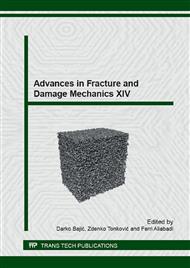p.17
p.21
p.25
p.29
p.33
p.37
p.41
p.45
p.49
On the Influence of the Contact Force and the Angle between the Wires on ACSR Conductors’ Mechanical Properties and Durability
Abstract:
Aluminium clad steel reinforced cables are widely used in long distance electrical energy transport. Under the influence of weather conditions, the conductors are subjected to additional stress, which may lead to accelerated deterioration and premature breakage. This phenomenon depends much on contact mechanics. Due to the rough geometry of real mechanical surfaces, the elastic-plastic contact between bodies occurs at several points simultaneously. The contact between wires or between the wires and the suspension clamp, which is regarded as a critical location, changes the mechanical properties of the conductor with the emergence and development of contact indents. In order to understand the development of the indents ant their influence in the properties of the wires, indentation, tensile and fatigue tests were performed on wires taken from a steel-aluminium conductor. The problem of normal contact when plastic deformations are much higher than the elastic ones is extremely complex. The convex profile of the wires brings additional complications. Specific strain intensity is proportional to the depth of penetration. Experimental researches have shown that the shape and size of the indents occurred at the contact points have a significant influence on the tensile strength and lifetime of the conductors and local deformations determine certain features of fatigue crack initiation and propagation.
Info:
Periodical:
Pages:
33-36
Citation:
Online since:
September 2015
Price:
Сopyright:
© 2016 Trans Tech Publications Ltd. All Rights Reserved
Share:
Citation:


